Bowers & Wilkins 804 D4 Review
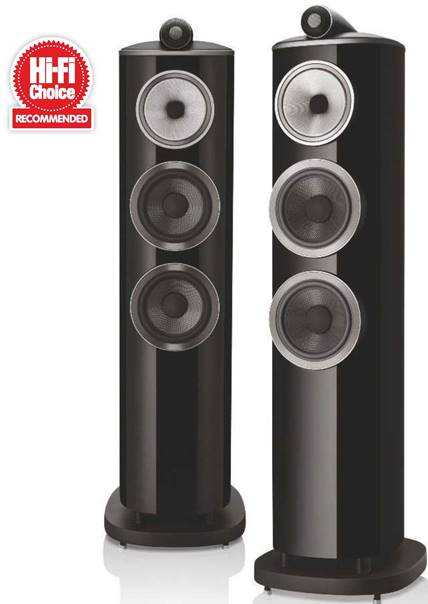
Nick Tate auditions the smallest floorstander in the company’s illustrious new flagship range and is suitably impressed. Read our Bowers & Wilkins 804 D4 Review.
Luxury lies not in the richness of things, but in the absence of vulgarity,” as Coco Channel famously said. That’s certainly the approach taken by Bowers & Wilkins designers, who have come up with an extremely elegant-looking new floorstanding loudspeaker. It’s dead modern, but doesn’t go over the top into bling territory. The result is crisp and classy, and that’s just the start of our journey into the 804 D4.
The 800 Series is B&W’s flagship range and the 804 is its entry-level floorstander. Often thought the poor relation of the bigger and more expensive 800 models, this latest D4 is certainly no longer there to just make up the numbers. The original 801 dates back to 1979, where it was adopted as a reference speaker in Abbey Road Studios. The 804 model
All instruments in the mix have a fine sense of air and space around them
Raising the flag
ORIGIN UK
TYPE 3-way floorstanding loudspeaker
WEIGHT 36.9kg
DIMENSIONS (WxHxD) 306 x1,071 x391mm
FEATURES
• 1x 25mm tweeter
• 1x 130mm midrange driver
• 2x 165mm bass drivers
• Quoted sensitivity: 89dB/1W/1m (8ohm)
DISTRIBUTOR B&W Group Ltd.
TELEPHONE 0800 2321513
WEBSITE bowerswilkins.com
line first appeared with 1998’s Nautilus 804, but the 804 Diamond of 2005 was the first properly modernsounding version. 2010’s 804 D2 was further tweaked, and the 2015 804 D3 was better still, eschewing the old Kevlar midrange cones for new Continuum types of lower distortion.
The new 804 D4 has been heavily revised over its predecessor. In the outgoing D3 series, the top-end 800 models got B&W’s ‘reverse wrap’ enclosure, but this now trickles down to the 804 D4. Bowers says that the old model with its more conventional front baffle created various issues, which have been solved by the new continuously curved front profile, one that swoops around back to a central rear aluminium ‘spine’. This, says spokesman Andy Kerr, reduces resonance due to it being a more inert and stiffer structure with less baffling around the drive units to aid dispersion.
The internal Matrix bracing is now done with 18mm plywood rather than MDF. The cabinet employs 12 layers of pressed and glued beech wood, which then get an immaculate paint finish. The top plate is made from aluminium with Connolly leather trim, while the aluminium rear spine looks striking. The choice of gloss black or gloss white finishes, plus satin rosenut and satin walnut won’t be unwelcome, either.
The drive units have also been reworked, with twin 165mm Aerofoil coned bass drivers sharing the low frequency load. Further up, a single 130mm Continuum coned midrange driver works with the 25mm Diamond tweeter; this is similar to its D3 predecessor except for the longer ‘tweeter-on-top’ housing and new magnet assembly. Crossover points are 350Hz and 3.5kHz. So-called ‘Biomimetic Suspension’ is fitted to the midrange driver, said to be 80dB quieter than a conventional spider at 1kHz. Foam anti-resonance plugs are fitted to the Aerofoil bass cones.
The bass port now fires down instead of forwards. The speaker turns in a broad claimed frequency response of 24Hz to 28kHz (+/-3dB), plus 89dB sensitivity that’s good in absolute terms, but only so-so for the 804 D4’s size. This speaker is easy to position, as it works well from as close as 20cm to a rear boundary wall.
Sound quality
There’s nothing outstanding about the 804 D4 at its price – aside from its sheer all-round competence. Given that many of its rivals excel in some things yet can be quite mediocre in others, it is actually quite unusual in this respect. It’s a super-safe bet that, regardless of your partnering system and music taste, it’ll deliver the goods with the minimum of fuss. In a world of quirky speakers, that’s a great trait.
In the past I have found B&W’s 800 Series speakers to be a little on the clinical side, lacking some of the emotional articulation and/or fun of some rivals. The 804 D3 launched five or so years ago began to change this state of affairs, and the 804 D4 takes the ball and runs with it. This floorstander is really enjoyable, as well as being technically extremely good at pretty much everything.
In terms of frequency balance, it’s an even-sounding design, with a commendable lack of bass boom, cabinet thrum and upper mid roughness. Instead, it’s very balanced from bottom to top, although I find it ever so slightly bright in the higher registers. The Riviera Affair by Neil Richardson is a classic bit of late-Sixties cheesy listening; an analogue recording, but not one that wasn’t particularly well remastered digitally in the Nineties. It doesn’t grate, but the 804 D4 shows off its “well-lit’ tonality in no uncertain terms.
Earlier 804s might have fixated on this, but not so the D4. Rather, it gets into the swing of the music and shows real enthusiasm. Although a little grainy, the soaring strings sound mesmeric with the backing rhythm section tight and full of energy, the bass guitar really pushing the song along. This speaker proves well able to capture the music’s slightly kitsch, over-the-top feel, and the fun that comes with it. Despite the recording being over half a century old, there is no sense of the B&W deconstructing it in a negative way. Its precise handling of the drum work is a joy, and the hi-hat cymbals are smooth yet sonorous.
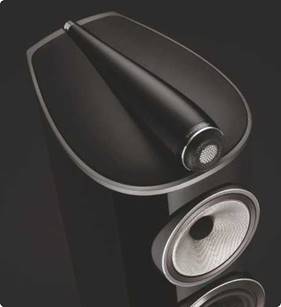
The drive units and tweeter-on- top have all been reworked
The classic Seventies rock of After The Fire’s Starflight is quite a leap forward, though. It has a far more sophisticated production compared with the easy listening track, and the 804 D4 tells me all about it. Its excellent midband detailing and fine soundstaging make for a very precise recorded acoustic, with vocals locked centre left and right, and keyboards pushing further to the extremes, overlying the rhythm section. All instruments in the mix have a fine sense of air and space around them, yet also manage to sound well defined and positive. I’ve heard better soundstaging and depth from high-end Magneplanars MartinLogans and Quad electrostatics, but none are as accomplished as the B&W in other respects.
The 804 D4’s clean, articulate and tuneful bass is another treat, as its handling of Galatee’s Let Them Drink Champagne shows. This is a spacious slice of modern French synth-wave with an affectionate nod to Jean Michel Jarre, and has a thumping sequenced synth bass that’s a tortuous workout for any loudspeaker. The B&W shrugs it off like it isn’t bothered, sounding tight, taut and in control at all times – even when I push the wick up on the amplifier. I certainly get no sense of being able to hear the cabinet, and the down-firing port seems pretty much inaudible too. This sets the 804 D4 ahead of the already fine D3, to my ears. Yet despite not being physically taxed by the gruelling bassline, it still really enjoys itself.
With all these high scores on the doors, I am intrigued to see how the 804 D4 acquits itself with classical music. Extremely good as it turns out. My Deutsche Grammophon CD of the Berlin Philharmonic working its way through the first movement of Beethoven’s Pastoral Symphony sounds great. It’s a slightly dry recording in a rather airless hall, but the playing is top notch and this speaker tells me so in no uncertain terms. All its good sides come to the fore; its light, deft rhythmic touch, spacious soundstaging, accurate imaging and fine midband detail retrieval make for an atmospheric and finely resolved sound, with lovely texture to the strings. I am particularly impressed by the dynamics too; it is able to go loud at the drop of a hat, with less of a sense of the music being squeezed out of a toothpaste tube, than expected. Of course, you’re not going to get the massive scale and visceral impact of an 801 D4, but neither do you have to fork out its price!

The 804 D4 isn’t beyond criticism of course, no speaker is – but I think it’s churlish to complain at its price point, especially when you consider the flaws of its rivals. Its ability to turn in eight or nine out of 10 scores pretty much across the board is impressive. In absolute terms it lacks the physical heft and sheer insight that better and more expensive designs offer, and its treble – while excellent for a dome design – can’t quite deliver the full silkiness of a ribbon.
Conclusion
Thumbs firmly aloft then for B&W’s new 804 D4. It’s an extremely good all-rounder with a bubbly enthusiasm for music and general sense of joie de vivre. Another important point is that it gives relatively little away considering its modest size and cabinet volume, yet gains much by being far more listening room friendly than the bigger models in the range, which need considerably larger spaces to really fly. Capable, accessible, enjoyable, entertaining and accurate, what’s not to like?
Spendor’s D9.2 is as close to the 804 D4 as makes no difference; if you can spring for one you can afford the other. It’s a little taller, but also a UK-designed and built three-way floorstander. They’re distinctively different in their voicing however – the B&W sounding a little punchier and crisper, with oodles of detail, excellent extension and a dynamic, physical nature. The D9.2 is a bit less engaging superficially, being slightly softer and less tonally bright. It’s very enjoyable to listen to and subtly musical in a way its rival doesn’t quite manage.


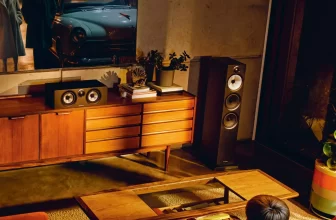
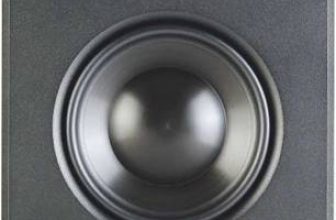
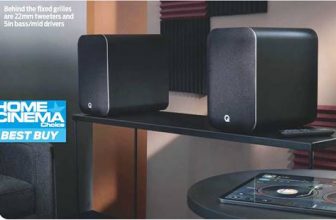
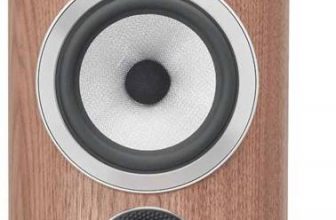
Damning with feint praise.